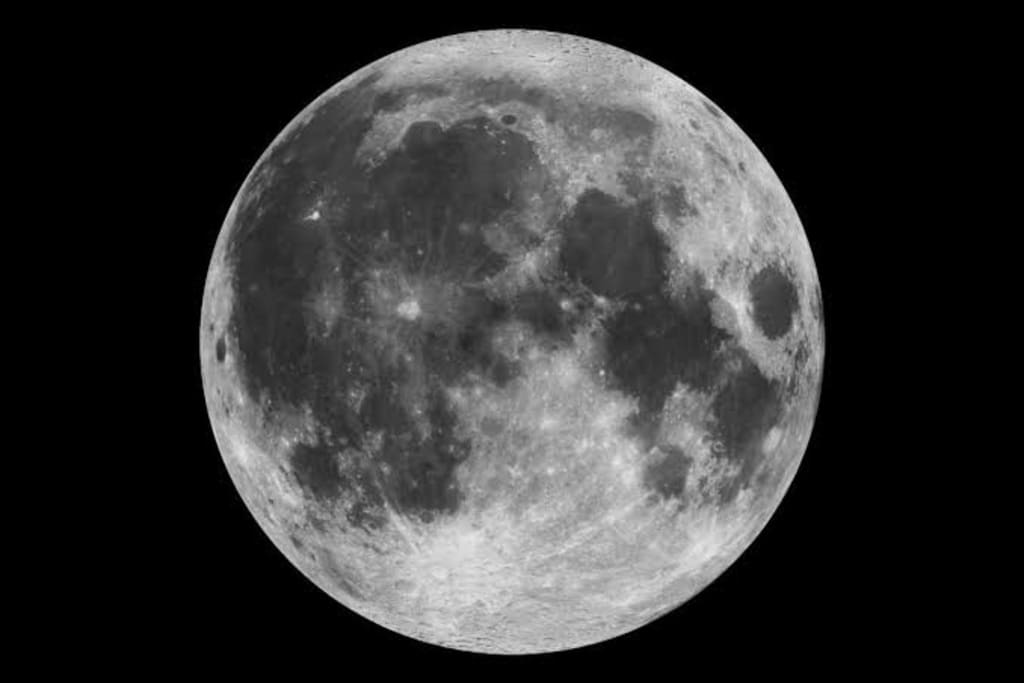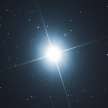Content warning
This story may contain sensitive material or discuss topics that some readers may find distressing. Reader discretion is advised. The views and opinions expressed in this story are those of the author and do not necessarily reflect the official policy or position of Vocal.

The Moon
The Moon, Earth’s only natural satellite, has fascinated humans for millennia. Its origin, structure, and influence on Earth make it a significant celestial body worth exploring in detail.
1. Formation and Origin
The Moon formed approximately 4.5 billion years ago, shortly after the formation of the solar system. The leading theory of its origin is the giant-impact hypothesis. According to this theory, a Mars-sized body named Theia collided with the early Earth. The impact ejected a significant amount of debris into orbit around Earth, which eventually coalesced to form the Moon. This hypothesis is supported by similarities in the isotopic compositions of Earth and Moon rocks, indicating a common origin.
2. Physical Characteristics
The Moon is the fifth largest natural satellite in the solar system, with a diameter of about 3,474 kilometers (2,159 miles), just under the width of China. It has a mean radius of 1,737.4 kilometers (1,079 miles) and a surface area of 37.9 million square kilometers, which is about 14.6 million square miles, roughly equivalent to the combined surface area of Africa and Australia.
The Moon’s internal structure consists of three main layers:
- Core: The Moon’s core is relatively small, making up about 1-2% of its mass, and is composed primarily of iron with some sulfur and nickel.
- Mantle: Surrounding the core, the mantle contains minerals rich in magnesium, oxygen, and silicon. This layer played a crucial role in the Moon’s volcanic activity in its early history.
- Crust: The outermost layer, the crust, is composed of a mixture of rock types, including anorthosite and basalt. The crust’s thickness varies, being thinner on the near side and thicker on the far side.
3. Surface and Geology
The Moon’s surface is covered in a layer of dust and rocky debris called regolith, formed by billions of years of meteorite impacts. The surface features numerous craters, the most prominent being the South Pole-Aitken Basin, which spans a quarter of the Moon’s surface and is nearly deep enough to fit Mount Everest inside. The Moon also has vast plains called maria (singular: mare), formed by ancient volcanic eruptions. These dark basaltic plains cover about 16% of the lunar surface and are primarily found on the near side.
The Moon was once geologically active, with a surface covered by an ocean of magma. Today, its geological activity has ceased, although there are still traces of water ice in permanently shadowed craters at the poles.
4. Orbit and Rotation
The Moon orbits Earth at an average distance of about 384,400 kilometers (238,855 miles), roughly 30 times Earth’s diameter. It takes approximately 27.3 days to complete one orbit around Earth, a period known as a sidereal month. The Moon’s rotation period is synchronized with its orbital period, a phenomenon called synchronous rotation or tidal locking. This means that the same side of the Moon always faces Earth, with the far side remaining hidden from view until the advent of space exploration.
5. Lunar Phases and Eclipses
From Earth’s surface, we observe eight distinct phases of the Moon’s illumination, known as lunar phases. These phases result from the changing angles of sunlight illuminating the Moon as it orbits Earth. The primary phases are:
- New Moon: The Moon is between Earth and the Sun, and its dark side faces us.
- Waxing Crescent: A sliver of the Moon’s surface is illuminated.
- First Quarter: Half of the Moon’s surface is illuminated.
- Waxing Gibbous: More than half of the Moon’s surface is illuminated.
- Full Moon: The entire face of the Moon is illuminated.
- Waning Gibbous: The illuminated portion decreases.
- Last Quarter: Half of the Moon’s surface is illuminated.
- Waning Crescent: A sliver of the Moon’s surface is illuminated before returning to the New Moon phase.
Lunar and solar eclipses occur due to the alignment of the Earth, Moon, and Sun. A lunar eclipse happens when Earth passes between the Sun and the Moon, casting a shadow on the Moon. A solar eclipse occurs when the Moon passes between Earth and the Sun, casting a shadow on Earth.
6. Influence on Earth
The Moon significantly impacts Earth in various ways. Its gravitational pull is responsible for the ocean tides, causing high and low tides. The Moon’s presence also stabilizes Earth’s axial tilt, which helps maintain a relatively stable climate over geological timescales.
7. Exploration and Future Missions
For most of human history, the Moon was observed only from afar. This changed on July 20, 1969, when NASA’s Apollo 11 mission landed humans on the Moon for the first time. Astronauts Neil Armstrong and Edwin “Buzz” Aldrin explored the lunar surface, collecting samples and conducting experiments, while Michael Collins orbited above in the command module. This historic event provided invaluable data about the Moon’s composition, geology, and environment.
Subsequent Apollo missions further expanded our understanding of the Moon. In recent years, interest in lunar exploration has been revived with plans for new missions. NASA’s Artemis program aims to return humans to the Moon and establish a sustainable presence by the end of this decade. Other countries, including China and India, have also launched lunar missions, contributing to our growing knowledge of the Moon.
8. Conclusion
The Moon, with its intriguing history, complex geology, and significant influence on Earth, remains a focal point of scientific research and exploration. Its formation story offers insights into the early solar system, while its phases and eclipses continue to captivate observers. As we look to the future, the Moon will undoubtedly play a crucial role in humanity’s ongoing quest to explore and understand the cosmos.The Moon, Earth’s only natural satellite, has fascinated humans for millennia. Its origin, structure, and influence on Earth make it a significant celestial body worth exploring in detail.
About the Creator
Enjoyed the story? Support the Creator.
Subscribe for free to receive all their stories in your feed. You could also pledge your support or give them a one-off tip, letting them know you appreciate their work.






Comments (1)
Excellent story